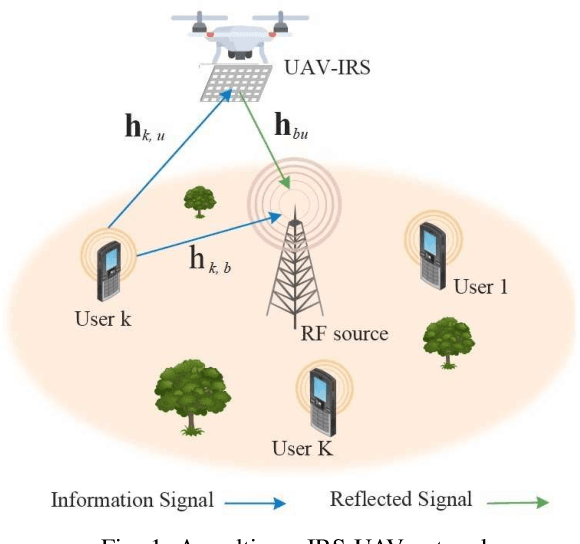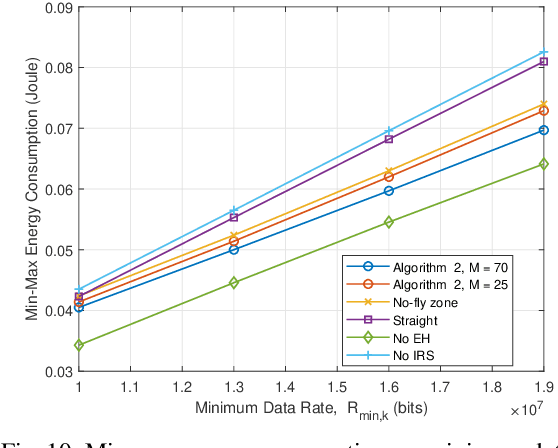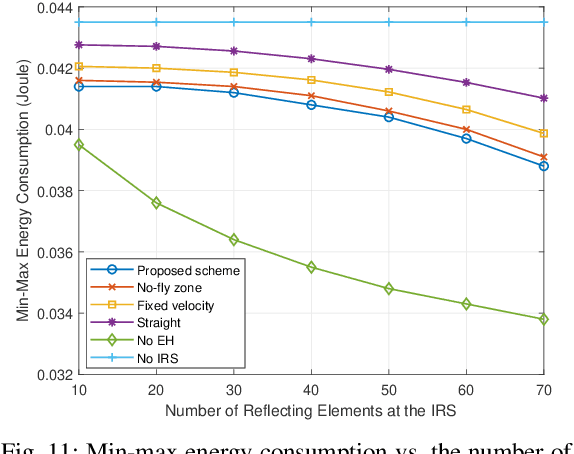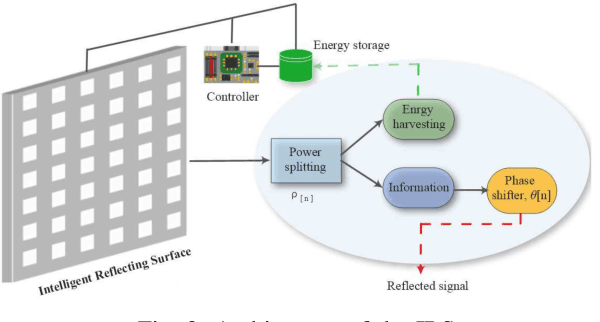User Scheduling and Trajectory Optimization for Energy-Efficient IRS-UAV Networks with SWIPT
Paper and Code
Sep 12, 2022



This paper investigates user scheduling and trajectory optimization for a network supported by an intelligent reflecting surface (IRS) mounted on an unmanned aerial vehicle (UAV). The IRS is powered via the simultaneous wireless information and power transfer (SWIPT) technique. The IRS boosts users' uplink signals to improve the network's longevity and energy efficiency. It simultaneously harvests energy with a non-linear energy harvesting circuit and reflects the incident signals by controlling its reflection coefficients and phase shifts. The trajectory of the UAV impacts the efficiency of these operations. We minimize the maximum energy consumption of all users by joint optimization of user scheduling, UAV trajectory/velocity, and IRS phase shifts/reflection coefficients while guaranteeing each user's minimum required data rate and harvested energy of the IRS. We first derive a closed-form solution for the IRS phase shifts and then address the non-convexity of the critical problem. Finally, we propose an alternating optimization (AO) algorithm to optimize the remaining variables iteratively. We demonstrate the gains over several benchmarks. For instance, with a 50-element IRS, min-max energy consumption can be as low as 0.0404 (Joule), a 7.13% improvement over the No IRS case (achieving 0.0435 (Joule)). We also show that IRS-UAV without EH performs best at the cost of circuit power consumption of the IRS (a 20% improvement over the No IRS case).
 Add to Chrome
Add to Chrome Add to Firefox
Add to Firefox Add to Edge
Add to Edge